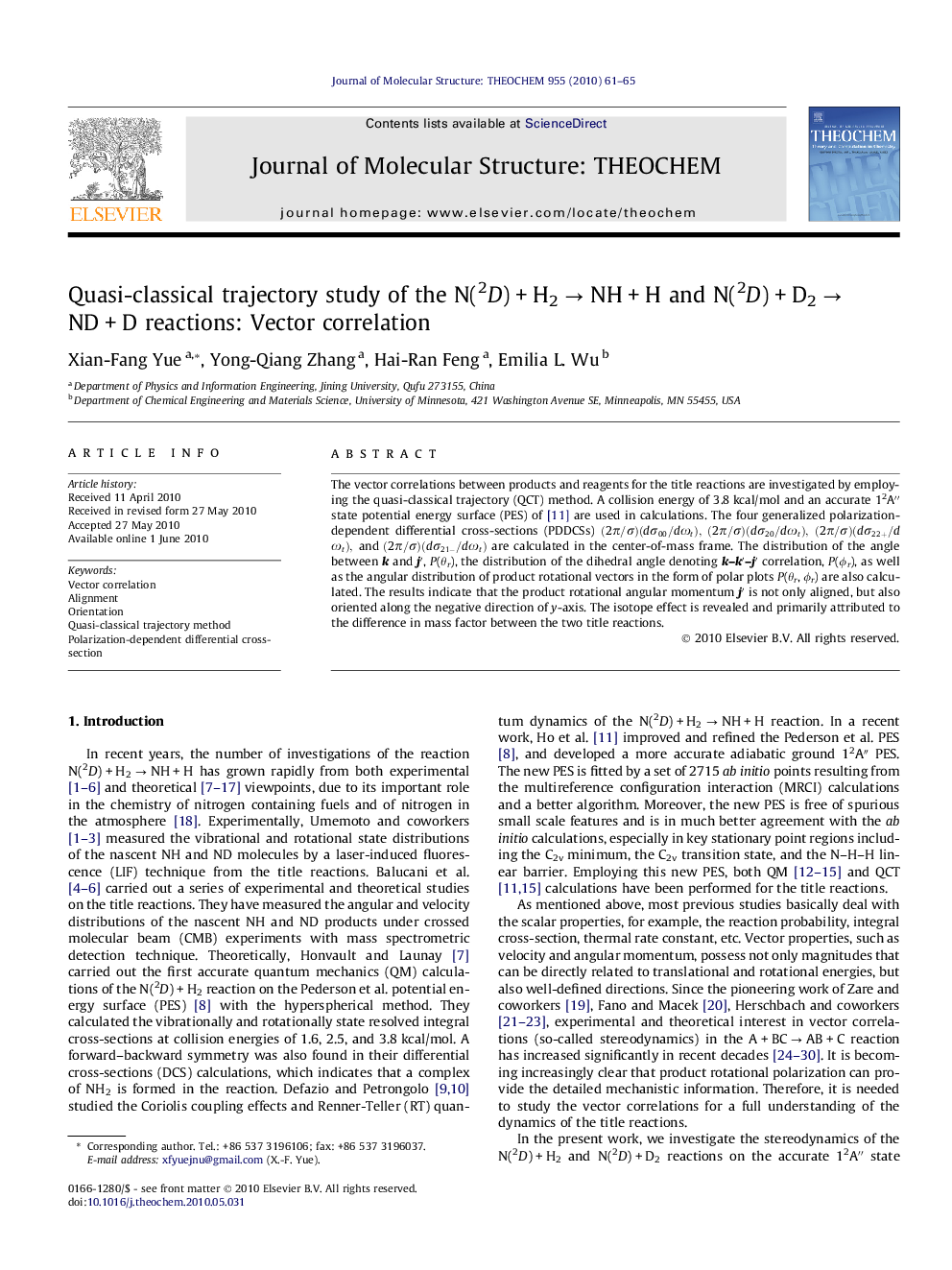| Article ID | Journal | Published Year | Pages | File Type |
|---|---|---|---|---|
| 5416339 | Journal of Molecular Structure: THEOCHEM | 2010 | 5 Pages |
Abstract
The vector correlations between products and reagents for the title reactions are investigated by employing the quasi-classical trajectory (QCT) method. A collision energy of 3.8 kcal/mol and an accurate 12Aâ³ state potential energy surface (PES) of [11] are used in calculations. The four generalized polarization-dependent differential cross-sections (PDDCSs) (2Ï/Ï)(dÏ00/dÏt),(2Ï/Ï)(dÏ20/dÏt),(2Ï/Ï)(dÏ22+/dÏt),and(2Ï/Ï)(dÏ21-/dÏt) are calculated in the center-of-mass frame. The distribution of the angle between k and jâ², P(θr), the distribution of the dihedral angle denoting k-kâ²-jâ² correlation, P(Ïr), as well as the angular distribution of product rotational vectors in the form of polar plots P(θr, Ïr) are also calculated. The results indicate that the product rotational angular momentum jâ² is not only aligned, but also oriented along the negative direction of y-axis. The isotope effect is revealed and primarily attributed to the difference in mass factor between the two title reactions.
Related Topics
Physical Sciences and Engineering
Chemistry
Physical and Theoretical Chemistry
Authors
Xian-Fang Yue, Yong-Qiang Zhang, Hai-Ran Feng, Emilia L. Wu,
